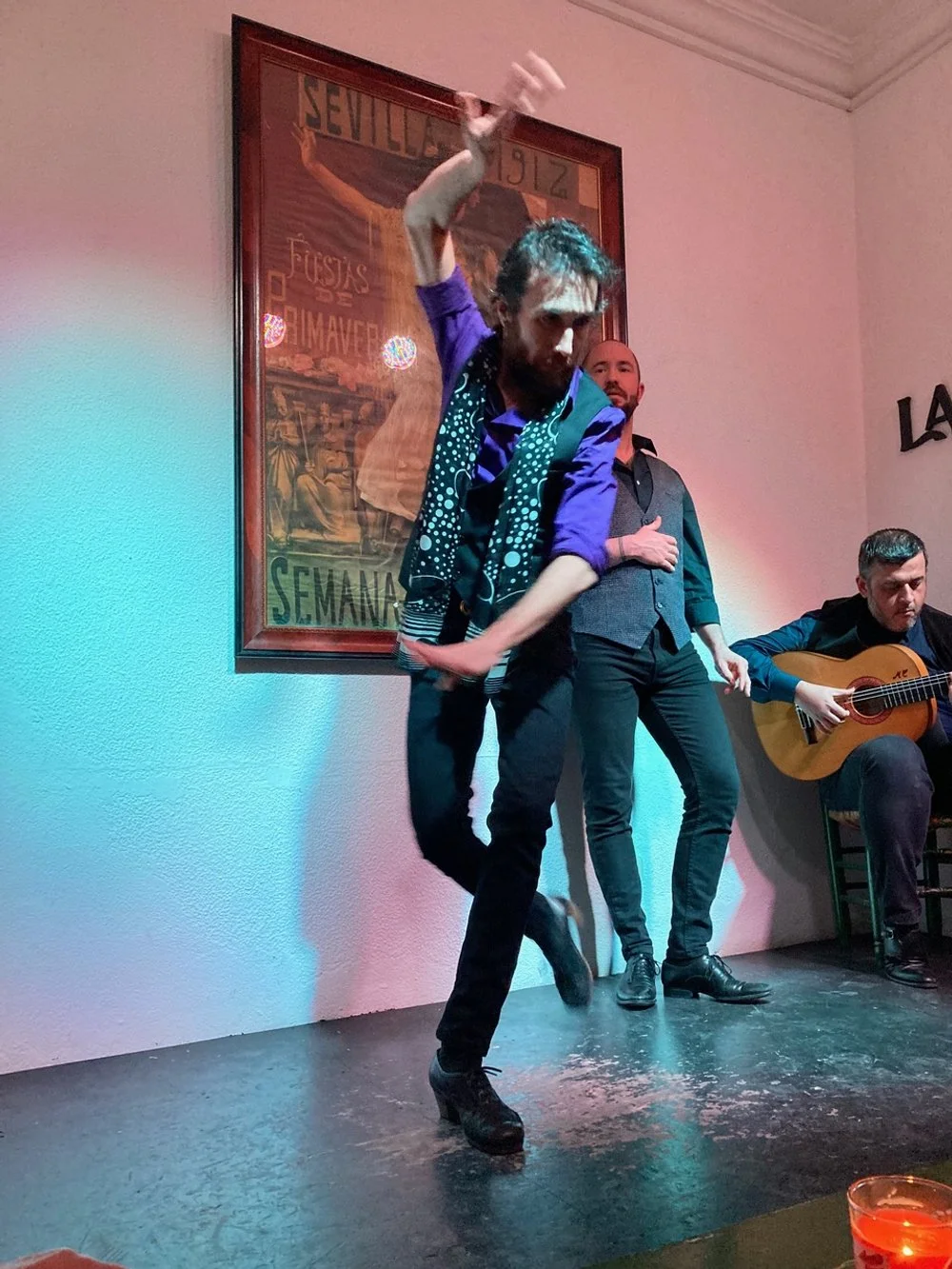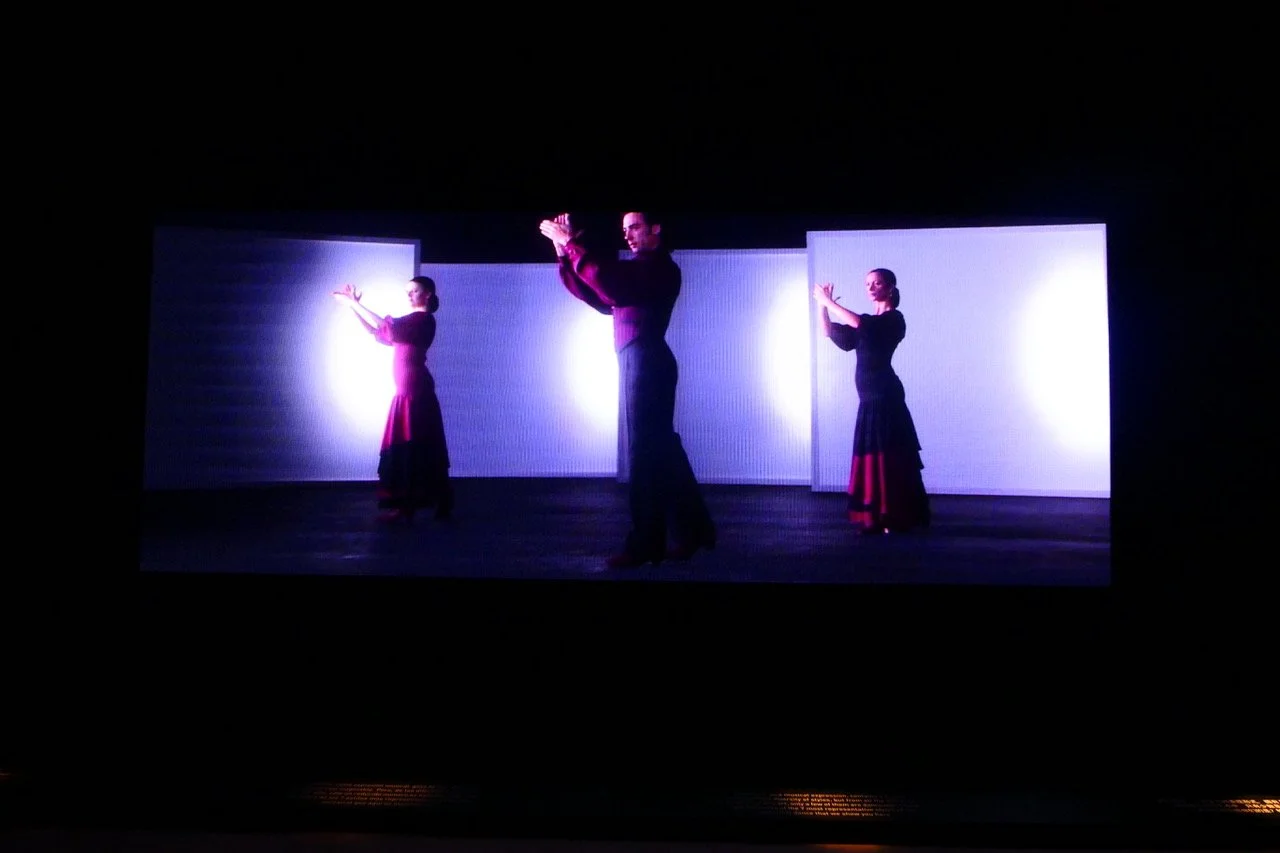Busking in Spain and the History of Flamenco, Part 2
Photo by Kazuo ota
I did a bit of research about flamenco dancing before we went to see it live. I was interested to learn that the music, which came from the gypsies in the Andalucía area in Spain’s southern regions in the 15th century, was compiled from adaptations of music and dance styles while they traveled in Iran, India, and Egypt. After they arrived in Andalusia, it took the gypsies three centuries of extortion and oppression by the monarchy for flamenco to start receiving continental recognition. And then during the late 18th and early 19th century, with the arrival of the Romantic era in Europe, flamenco became an artistic haven for romanticists, because it was a reflection of the oriental and the exotic. It was in that time period when the modern form of flamenco emerged that is popular today.
The last developmental phase of flamenco becoming the art form everyone now knows and loves was when it was adopted as a national dance by the Spanish dictator Francisco Franco who was in power from 1939 to 1975. He realized the potential flamenco could have on the country and started using it as an instrument for government propaganda to attract more tourists to Spain. And so, by the time Franco died in 1975, flamenco had established itself in the music and dance world as a prominent form of art and culture, synonymous with Spanish identity.
____________________
When we arrived at the ‘theater’, instead of walking into an expected larger playhouse, we were shocked to see a tiny room that could only fit six tables that each might squeeze three or four people around.
We were shown our seats and then given a choice of drink. We all chose wine, which we sipped while waiting for the performance to begin. We had arrived a little early, but it still took a while before there was any stage action, as we waited in whispered anticipation. We all wondered what we’d see, rather than what was in our imaginations, expecting to see a dark-haired woman dressed in a tapered flowing red satin dress with deep cleavage to stun the men as her hands held castanets or a fan to accentuate her arm movements.
Photo of flamenco dancers and guitarist by J. Sharland Day
However, when there was motion from a door at the side of the wooden stage, a man came out with a guitar and walked to the middle of the platform, and sat down in the chair that had been there. He began enthusiastically strumming the flamenco-style music we were familiar with, which was invigorating. After he played a few songs, he stood and moved the chair to the corner and another man came in and stood beside him. That man began to sing to the strums of the guitarist; his voice trained, strong, and melodic.
Suddenly we heard loud clomping — rat-a-tat-tatting — and soon a tallish, very slender man dressed in black tight pants, a blousy purple shirt and a green silky scarf around his neck came stomping out in his heeled dancing shoes. The four of us were not only startled by the sudden loud noise but were surprised that the dancer was a man, and not a woman in a red dress as we had expected. After all, that’s what most of the flamenco advertisements showed: a woman in the proverbial red dress holding a fan. I had a painted bottle opener to prove it. But we suppressed our prejudices and watched, our interest growing.
We’d read that flamenco dance, being an art form and a way to express oneself, was also a demonstration of the state of mind and intense emotions, besides demonstrating a different way of life…an artistic demonstration. Rhythm and expressing feelings were the two most important aspects of that type of dance, with the posture of the dancer, the aesthetics, and the representation of the dance as being the essential elements of the performance.
The man kicked butt in that department. He was so intense in his movements that were very emotional yet graceful. We also noticed that the singer sang to the movements of the man’s feet, reading meaning into each stomp and tap, singing the dancer’s song. The guitarist was playing to them both. It was an amazing demonstration of emotional and artistic forms in both movement and sound.
We loved the two performances that evening and left with a new appreciation for the culture whose free-spirited expressions gave us that fascinating art form.
Photo of flamenco dancers on stage by J. Sharland Day
The next day we went to the Flamenco Museum to see and learn more about the history of flamenco. We watched the videos offered and left feeling very uplifted. Without a doubt, it was an amazing artistic composition to behold. Besides the incredible desire and the obstinate determination, the most important thing one would need to start as a flamenco dancer was a lot of patience. Flamenco dance looked to be very difficult to master and would require years of practice to learn the complicated steps and movements. But it would take years also, to master the communication of thought, gestures, and looks to the singer or the guitar player, as well as needing to show in the most expressive way possible what the dancer’s innermost emotions and feelings were to the audience. All without words. That lets me out of making that a career move.
____________________
If you missed Part 1 of this two-part story, read it here.


